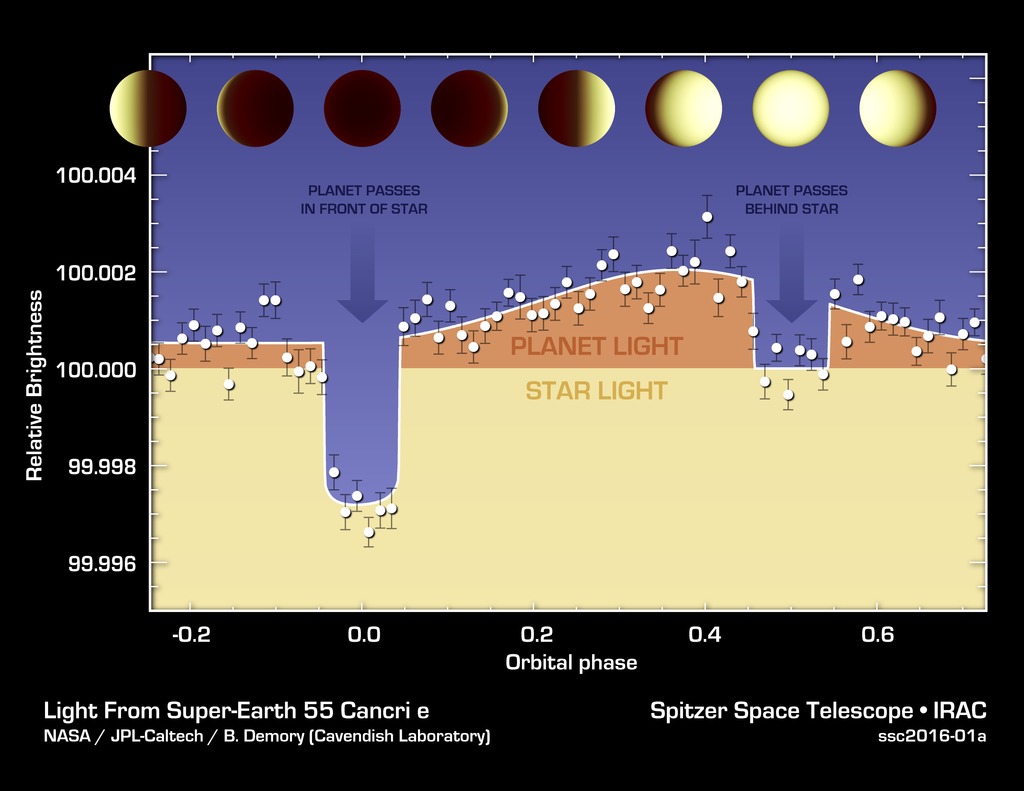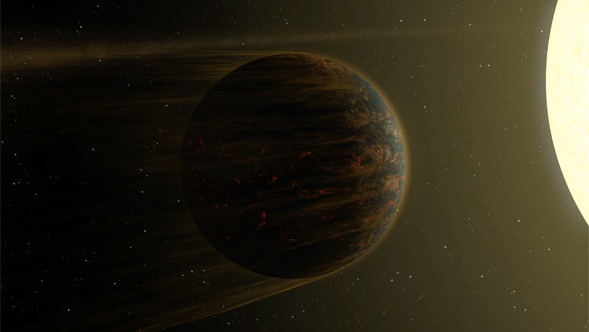
Credit: NASA/JPL-Caltech/University of Cambridge
Chart • March 30th, 2016 • ssc2016-01a
ssc2016-01a
The varying brightness of an exoplanet called 55 Cancri e is shown in this plot of infrared data captured by NASA's Spitzer Space Telescope.
Spitzer stared at the 55 Cancri star system for 80 hours, capturing changes in the total light of the system from both the star and the planet 55 Cancri e, as the planet orbited around the star. When the planet passes in front of the star, it blocks some of the starlight and the total light does down, as seen in the graph. When the planet passes behind the star, its light is blocked, and total light goes down again but not by as much.
By analyzing light curves like these, astronomers can figure out how much light comes from just the planet alone represented by the orange, top part of the graph. The star's light remains fairly constant. They can also measure changes in the planet's light to learn about its temperature.
In this case, 55 Cancri e was found to have dramatically different temperatures on each of its sides (the planet is tidally locked, so one side, the day side, always faces the star). The day side of the planet is nearly 4,400 degrees Fahrenheit (2,700 Kelvin), and the cooler, night side is 2,060 degrees Fahrenheit (1400 Kelvin).
About the Object
- Name







